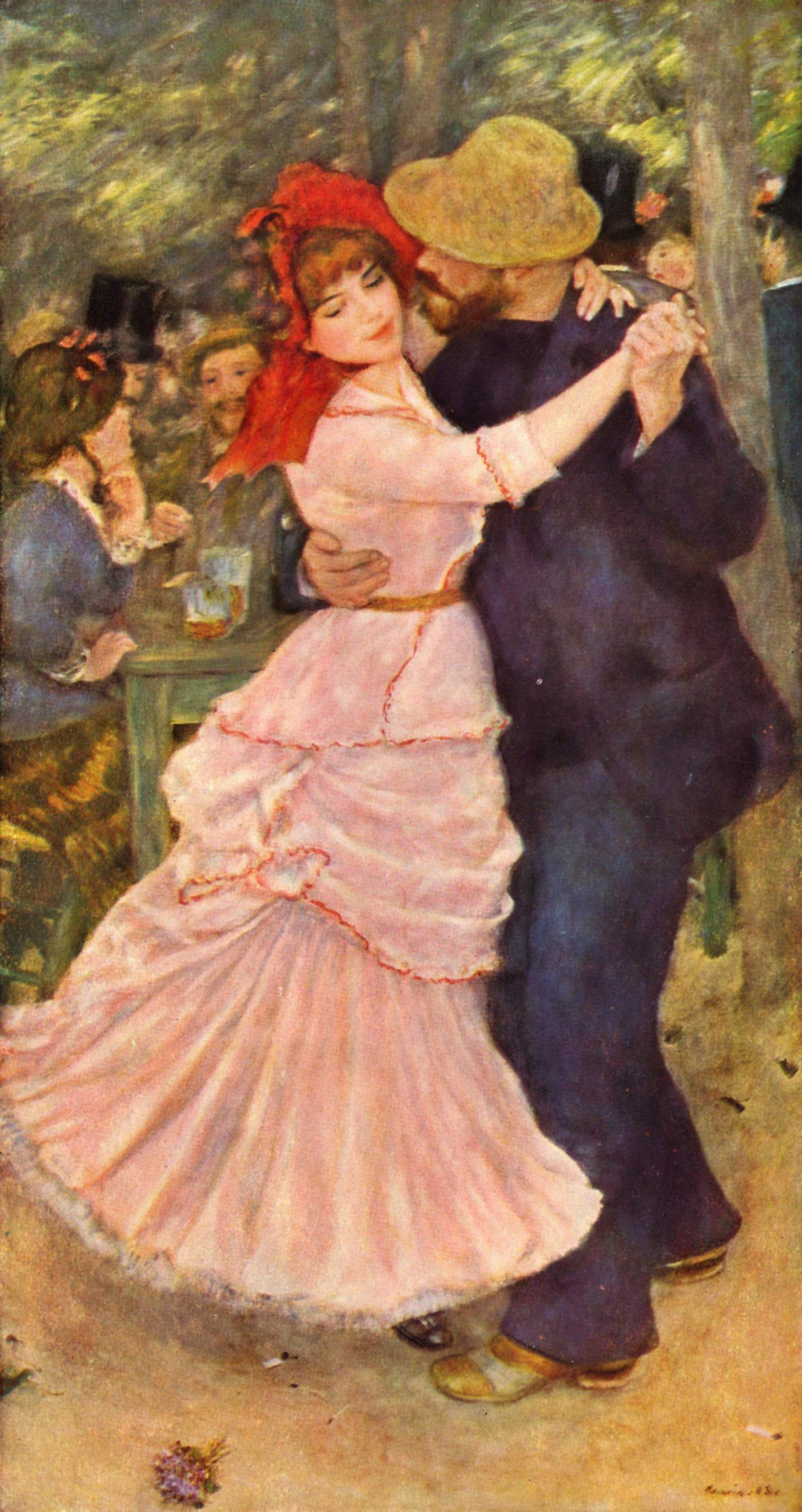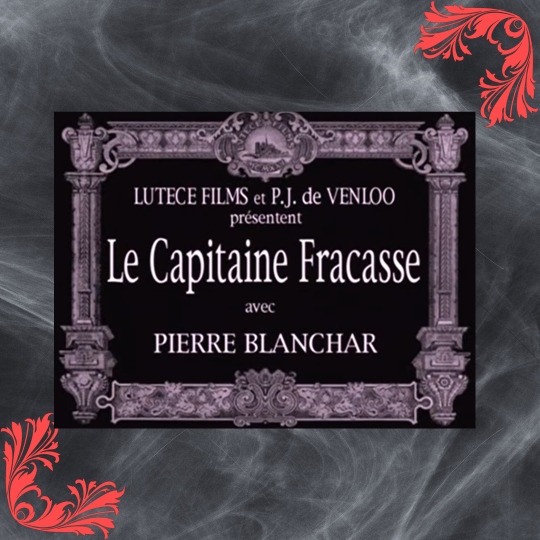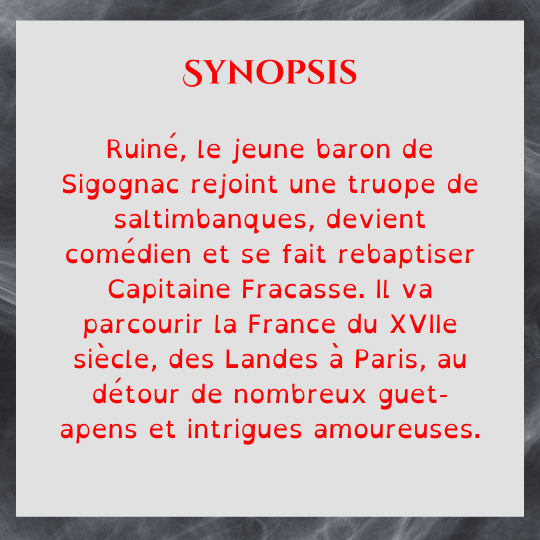#Daniel Mendaille
Photo

Serge Reggiani and Simone Signoret in Casque d'Or (Jacques Becker, 1952)
Cast: Simone Signoret, Serge Reggiani, Claude Dauphin, Raymond Bussières. Odette Barency, Loleh Bellon, Solange Certain, Daniel Mendaille, Dominique Davray, William Sabatier. Screenplay: Jacques Becker, Jacques Companéez. Cinematography: Robert Lefebvre. Production design: Jean d’Aubonne. Film editing: Marguerite Renoir. Music: Georges Van Parys.
A gangster movie/love story set in the underworld of Paris at the start of the 20th century, Casque d'Or feels slight, but its images have a way of tantalizing you. Perhaps that's because it evokes paintings like Pierre-Auguste Renoir's Dance at Bougival and Luncheon of the Boating Party. Jacques Becker began his career as an assistant to Pierre-Auguste's son, Jean Renoir, so it's easy to guess that there's an element of hommage in Becker's film. (Jean Renoir's wife, Marguerite, also worked as Becker's film editor.) The film's title, which translates as "golden helmet," is a reference to the blond hair of Marie (Simone Signoret), whom we first see as part of a boating party that lands at a riverside dance hall. Marie is the mistress of the gangster Roland (William Sabatier), but they're clearly not getting along. So when a stranger, Georges Manda (Serge Reggiani), joins the company at the dance hall, Marie begins to flirt with him. Meanwhile, the head of the criminal syndicate of which Roland is a part, Félix Leca (Claude Dauphin), is also making a play for Marie. Georges is an ex-con, trying to go straight as a carpenter, but he is drawn into a fatal involvement with Marie. The performances of Signoret, Reggiani, and Dauphin, as well as a colorful supporting cast, carry the rather thin story a long way, greatly helped by Becker's finesse as a director. There is a real chemistry between Signoret and Reggiani, which Becker had noticed in their previous teaming as the prostitute and the soldier who set the sexual carousel turning in La Ronde (Max Ophuls, 1950). In their first dance together, which is reprised in a haunting flashback at the film's end, Georges holds Marie with one hand on her waist and the other arm hanging free at his side -- a suggestion of their innate intimacy. Later, when Georges sees her again at a café, Marie is dancing with Roland, but she keeps her gaze focused on Georges: Becker and cinematographer Robert Lefebvre execute a dizzying tour de force in following the spinning couple around the dance floor, as Marie turns to look at Georges after every spin. The evocation of the seamy side of the Belle Époque is greatly aided by the production design by Jean d'Eaubonne and the costumes by Mayo (né Antoine Malliarakis).

Pierre-Auguste Renoir, Dance at Bougival

Pierre-Auguste Renoir, Luncheon of the Boating Party
5 notes
·
View notes
Video
youtube
Nous sommes tous des assassins (1952) Bande Annonce VF [HD]
Un soldato, ottuso e ignorante, sopravvissuto alla seconda guerra mondiale, continua a uccidere una volta finita la guerra. Quando provoca la morte di una guardia, viene condannato alla ghigliottina. Il suo difensore farà emergere durante il processo le responsabilità sociali dei suoi comportamenti devianti.
Note
Cayatte, giornalista e avvocato, al 13° film affronta il suo tema prediletto: il film è un appassionata requisitoria contro la pena di morte. Alle volte un po' didascalico, ma nel complesso un'opera avvincente. Scritto dal regista con Charles Spaak. Premio speciale della giuria a Cannes.
Siamo tutti assassini (Nous sommes tous des assassins) è un film del 1952 diretto da André Cayatte, vincitore del Premio Speciale della Giuria al 5º Festival di Cannes.[1
Titolo originale Nous sommes tous des assassins
Paese di produzione Francia, Italia
Anno 1952
Durata 115 min
Dati tecnici B/N
Genere drammatico
Regia André Cayatte
Soggetto André Cayatte, Charles Spaak
Sceneggiatura André Cayatte, Charles Spaak
Fotografia Jean Bourgoin
Montaggio Paul Cayatte
Musiche Raymond Legrand
Scenografia Jacques Colombier
Interpreti e personaggi
Marcel Mouloudji: René Le Guen
Raymond Pellegrin: Gino Bollini
Claude Laydu: Philippe Arnaud
Louis Seigner: abate Roussard
Georges Poujouly: Michel Le Guen
Louis Arbessier: avvocato del tribunale dei minori
René Blancard: Albert Pichon
Amedeo Nazzari: dottor Detouche (versione italiana)
Jean-Pierre Grenier: dottor Detouche (versione francese)
Yvonne Sanson: Yvonne Le Guen (versione italiana)
Jacqueline Pierreux: Yvonne Le Guen (versione francese)
Antoine Balpêtré: dottor Albert Dutoit
Léonce Corne: capitano Girard
Henri Crémieux: avvocato di Bauchet
Jean Daurand: Girard, l'uomo della cabina telefonica
Yvonne de Bray: prima cenciaiola
Lise Berthier: seconda cenciaiola
Guy Decomble: un ispettore
Monette Dinay: la ragazza di Charles
Julien Verdier: Bauchet
Yvette Etiévant: moglie di Bauchet
Juliette Faber: Francine Saulnier
Paul Faivre: Biribi
Anouk Ferjac: Agnès
Paul Frankeur: Léon, capo delle guardie
Renée Gardès: madre di Le Guen
Jérôme Goulven: Noblet
Elisabeth Hardy: madre della bambina
François Joux: Saulnier
Alinda Kristensen: donna svedese
Charles Lemontier: procuratore
Roland Lesaffre: detenuto barbiere
Liliane Maigné: Rachele
Daniel Mendaille: carceriere capo
Eliane Monceau: amica di Dutoit
Jacques Morel: Charles
Jean-Paul Moulinot: direttore della Santé
Lucien Nat: avvocato dell'accusa
Line Noro: Louise Arnaud, madre di Philippe
Marcel Pérès: Malingré
André Reybaz: padre Simon
Alexandre Rignault: gendarme
Solange Sicard: madre di Agnès
Sylvie: Laetitia Bollini, madre di Gino
Georges Tabet: la pianista
Jean-Marc Tennberg: Fredo
André Valmy: il piccolo Louis
François Vibert: madre di Mousset
Henri Vilbert: signor Arnaud
0 notes
Text








Le capitaine Fracasse.
1929
Réalisation : Alberto Cavalcanti
Scénaristes : Alberto Cavalcanti et Henry Wulschleger
Casting :
Pierre Blanchar, Lien Deyers, Marguerite Moreno, Charles Boyer, Odette Josylla, Daniel Mendaille, Marie-Thérèse Vincent, Armand Numès, Pola Illéry, Léon Courtois, René Bergeron, Clairette de Savoye, Alexandre Vargas, Paul Velsa.
Synopsis :
Ruiné, le jeune baron de Sigognac rejoint une truope de saltimbanques, devient comédien et se fait rebaptiser Capitaine Fracasse. Il va parcourir la France du XVIIe siècle, des Landes à Paris, au détour de nombreux guet-apens et intrigues amoureuses.
Plaisir de visionnage : Film muet et Noir et Blanc.
Fin un peu modifié pour correspondre aux exigences morales (?) de l'époque.
Ca se regarde, mais surtout pour le public cinéphile ou grand•es amateur•trices du genre.
Note : 1 chat.
Disponibilité :
Disponible gratuitement sur YT
VOD
Bonus Point Chat :
Le chat du Baron fait une apparition. De même que son chien et son cheval.
Mais aussi quelques rats.
Note : 3 chats.
0 notes
Text
Captain Fracasse (1929) A Silent Film Review
Captain Fracasse (1929) A Silent Film Review
A penniless nobleman decides to venture out into the wide world when a troupe of itinerant actors spend the night at his chateau. Chaos ensues, of course, and there is plenty of fencing, fighting, revenge, torture, chases, escapes and true love.
(more…)
View On WordPress
#1929#Action Adventure#Alberto Cavalcanti#Captain Fracasse#Charles Boyer#Daniel Mendaille#French Film#Le Capitaine Fracasse#Lien Deyers#Pierre Blanchar#Pola Illéry
1 note
·
View note
Photo

Kameradschaft (G.W. Pabst, 1931)
Cast: Alexander Granach, Ernst Busch, Fritz Kampers, Elisabeth Wendt, Gustav Püttjer, Daniel Mendaille. Georges Charlia, Alex Bernard, Héléna Manson. Screenplay: Peter Martin Lempel, Karl Otten, Gerbert Rappaport, Ladislaus Vajda, Léon Werth, based on a novel by Carl Haensel. Cinematography: Robert Baberske, Fritz Arno Wagner. Production design: Ernö Metzner, Karl Vollbrecht. Film editing: Jean Oser, Mark Sorkin. Music: G. von Rigelius.
A film made in 1931 about a rapprochement between the French and the Germans seems naïve perhaps only with the benefit (if you can call it that) of hindsight. Pabst's Kameradschaft was also released with the French title La Tragédie de la mine, and the dialogue oscillates between German and French. It's less a plea for political unity than for a comradeship of workers, united against the forces that exploit them. A fire and explosion on the French side of a coal mine that extends beneath the border between France and Germany traps a number of French miners. Hearing of this, a German miner named Wittkopp (Ernst Busch), urges his fellow miners and his bosses to put together a rescue team to help the trapped Frenchmen. They wind up being hailed as heroes by the French, though the speeches at the end of the film are a bit heavy-handed. Like most successful mine-rescue movies, this one depends on well-drawn characters, exciting action and convincing sets. The characters and story were based on an actual disaster along the Franco-German border in 1906. Pabst's direction, aided by skillful editing by Jean Oser and Marc Sorkin, keeps things suspenseful and coherent. But perhaps the greatest contribution comes from production designers Ernö Metzner and Karl Vollbrecht, whose sets, constructed in the studio, have a claustrophobic reality. The cinematography of Fritz Arno Wagner and Robert Baberske adds to the illusion.
1 note
·
View note